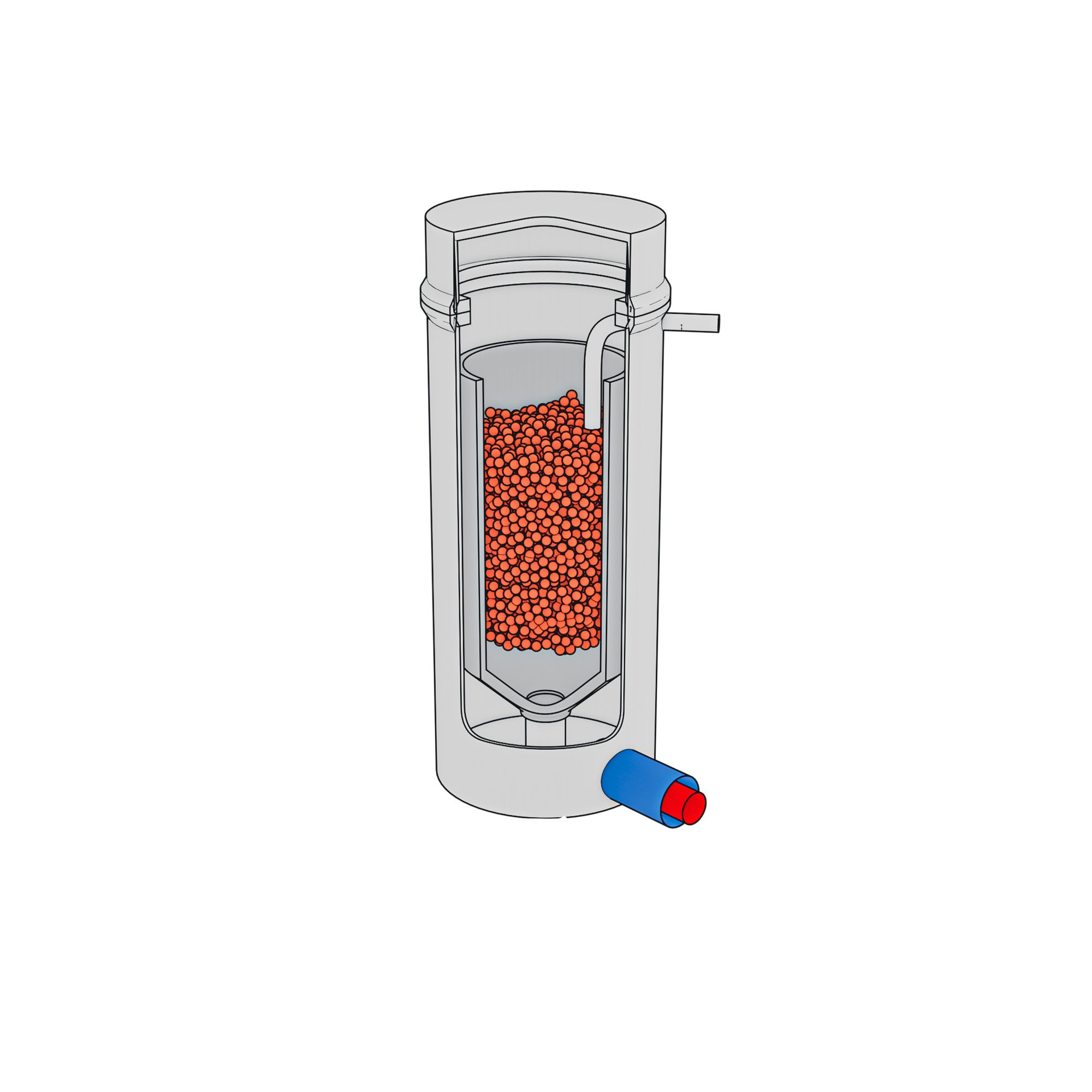
Fluoride Salt-Cooled Reactor
The Fluoride Salt-Cooled High-Temperature Reactor (FHR) are reactors that use graphite moderator, solid fuels, and molten salt coolant. The most promising versions of the the FHR use TRISO particle fuel and fluoride salt coolant. Kairos Power is the major developer for FHRs in the USA.
Utilizing TRISO Fuel and Fluoride Salt Coolant
Fluoride Salt Reactors are expected to use use TRISO fuel, known for its stability at high temperatures and low-pressure fluoride salt as a coolant instead of conventional water. The FHR can be designed as a pebble-bed core or a prismatic core, using graphite moderator and reflector blocks.
In the case of the pebble-bed FHR, the pebbles have an internal cavity or low density graphite core so they can float in a pool of molten fluoride salt. In this configuration, pebbles are fed from the bottom and float to the top of the core. The pebbles can contain TRISO particle fuel. If the pebble uses Silicon Carbide as the matrix material, it is considered Fully Ceramic Micro-encapsulate fuel. The molten fluoride salts facilitate efficient heat transfer at high temperatures and retain radioactive fission products. Studies confirm that these salts are compatible with high-temperature structural materials like stainless steel, indicating reliable service life and potential commercial viability.
Low Pressure and Online Refueling
The FHR operates at low pressure, which reduces the need for high-pressure containment structures or thick walled pressure vessels during operating conditions. Additionally, the use of fuel pebbles allows for online refueling, reducing downtime and enhancing operational efficiency. However, it is known from past experience that jostling pebbles can introduce significant operational challenges due to graphite dust, clogging, and fuel cracking.
FHR technology presents an alternative in the energy production arena, combining aspects of safety, reliability, and efficiency in energy production, and providing a potential pathway toward a sustainable energy future using TRISO particle fuel.